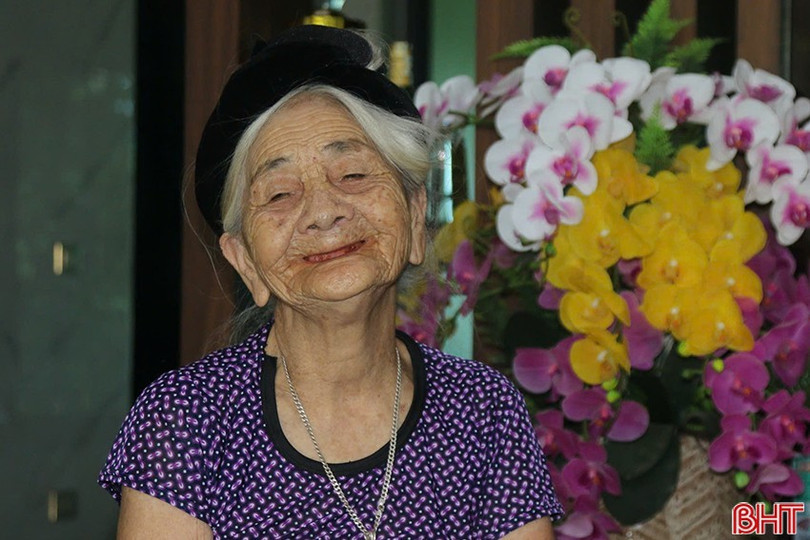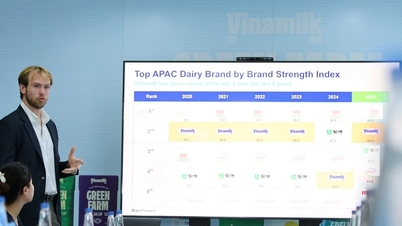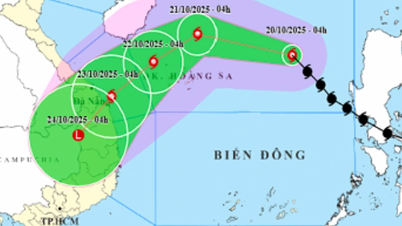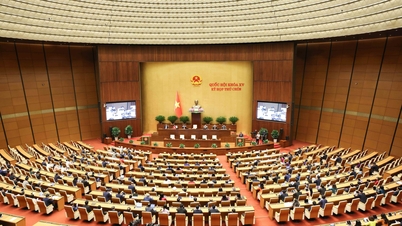According to the results of the 2024 Mid-Term Population and Housing Census announced by the General Statistics Office in early January 2025, Vietnam's population as of April 1, 2024 was more than 101.1 million people, the third largest in Southeast Asia (after Indonesia and the Philippines) and the 16th in the world . Our country is still in the "golden population" structure period. However, we are entering the population aging stage and are one of the countries with the fastest population aging rate in the world. It is expected that by 2038, Vietnam will become a country with an aging population.

Ha Tinh is also not outside the "orbit" of population aging. According to the latest data, the total number of elderly people in the province is currently about 242,000 people (aged 60 and over), accounting for 18.6% of the total population. Meanwhile, the level above 14% is considered to be entering the "aging population" stage.
How to improve the aging population, the first solution we think of must be to encourage childbirth. Easy but difficult, difficult but easy because the important issue of increasing the birth rate is still very difficult.
In reality, a part of today's youth is "lazy to love, afraid to get married, afraid to have children". According to the latest statistics, the average age of first marriage in Vietnam is changing towards later marriage, increasing from 24.1 years old (1999) to 25.2 years old (2019). After 4 years, by 2023, the age of first marriage continued to increase by 2 years and is currently 27.2 years old. Not far away, the people around me are "living proof" of this situation. My 8X friend has a stable job and house, although he has had many "family meetings" but still cannot bring his daughter-in-law home to meet his parents; my smart, pretty 9X eldest sister is also having trouble in love...
Meanwhile, modern pressures make many young people reluctant to have many children... In 2024, Vietnam's birth rate will be only 1.91 children/woman, the lowest in our country's demographic history, in which Ho Chi Minh City continues to be the locality with the lowest birth rate in the country with 1.32 children/woman and tends to continue to decrease.

A country with a very low birth rate will lead to negative consequences in all areas, such as the population will rapidly age, there will be a shortage of labor force, low labor productivity, having to import labor from abroad, the social structure will become loose; more elderly people will lead to a burden on the social security system...
Vietnam is implementing solutions to encourage young people to get married, want to have children, have two children, and limit gender imbalance... Recently, the National Assembly Standing Committee passed an Ordinance amending Article 10 of the Population Ordinance. In which, couples can decide on the time of giving birth, the number of children and the interval between births in accordance with their age, health status, conditions of study, work, work, income and child-rearing. At the same time, the newly passed Ordinance has removed the regulation that each couple and individual can have one or two children.
Previously, in March 2025, the Central Inspection Committee also issued guidelines on disciplinary action against party organizations and party members who violate the law: party members who give birth to a third child or more will not be disciplined as before. Or right in the Draft Population Law under construction, the maternity leave period will be 7 months for the second child; women who give birth to 2 children in industrial parks, export processing zones and provinces and cities with low birth rates will be supported to rent or buy social housing...
Many localities also apply cash reward policies to encourage childbirth: Ho Chi Minh City has made a list of support for women if they give birth to 2 children before the age of 35 with a cost of 3 million VND; Hau Giang province (old) also supports one-time prenatal screening and newborn screening costs according to medical service prices at public facilities, and one-time support of 1.5 million VND for hospital fees; or recently, the Ministry of Health proposed financial incentives, cash or in-kind support for families who have two daughters to reduce gender imbalance at birth...

However, those who have not given birth, have not given birth to two children or have given birth like me still need strong enough policies to help the whole country gradually solve the problem of population aging. We still need more long-term financial support such as childbirth subsidies, housing construction support, preferential home loans; improve maternity and childcare policies such as increasing maternity leave for both fathers and mothers; develop a system of high-quality kindergartens with reasonable prices according to income levels; reform the education system, reduce pressure on parents and students; support parents raising young children with flexible working models, working from home..., encourage businesses to arrange kindergartens right at the workplace...
And more fundamentally, we need a "push" from education and media so that young people understand the value of building a family, giving birth and raising children. Being a father and mother is not only a duty but also a precious journey - that should be taught from school.
Population aging – it sounds like it is a matter of the government, of experts. But in fact, it is the story of every family, every young person, every child born – or not born. The story of a country’s old age or youth, ultimately begins with the choices we make today!
Source: https://baohatinh.vn/muon-tre-lai-thi-phai-sinh-them-post291715.html



![[Photo] Chairman of the Hungarian Parliament visits President Ho Chi Minh's Mausoleum](https://vphoto.vietnam.vn/thumb/1200x675/vietnam/resource/IMAGE/2025/10/20/1760941009023_ndo_br_hungary-jpg.webp)
![[Photo] Prime Minister Pham Minh Chinh meets with Speaker of the Hungarian National Assembly Kover Laszlo](https://vphoto.vietnam.vn/thumb/1200x675/vietnam/resource/IMAGE/2025/10/20/1760970413415_dsc-8111-jpg.webp)

![[Photo] Solemn opening of the 10th Session, 15th National Assembly](https://vphoto.vietnam.vn/thumb/1200x675/vietnam/resource/IMAGE/2025/10/20/1760937111622_ndo_br_1-202-jpg.webp)
![[Photo] National Assembly Chairman Tran Thanh Man holds talks with Hungarian National Assembly Chairman Kover Laszlo](https://vphoto.vietnam.vn/thumb/1200x675/vietnam/resource/IMAGE/2025/10/20/1760952711347_ndo_br_bnd-1603-jpg.webp)





























![[Photo] The Steering Committee of the 2025 Fall Fair checks the progress of the organization](https://vphoto.vietnam.vn/thumb/1200x675/vietnam/resource/IMAGE/2025/10/20/1760918203241_nam-5371-jpg.webp)







































































Comment (0)